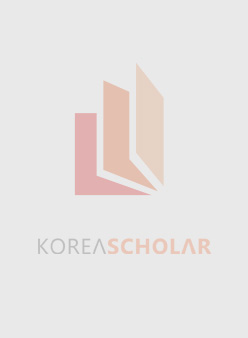간행물
현대문법연구 KCI 등재 Studies in Modern Grammar

- 발행기관 현대문법학회
- 자료유형 학술지
- 간기 계간
- ISSN 1226-3206 (Print)2713-5780 (Online)
- 수록기간 1992 ~ 2021
- 주제분류 인문학 > 언어학 인문학 분류의 다른 간행물
- 십진분류KDC 745DDC 425
권호리스트/논문검색
제82권 (2015년 2월) 5건
1.
2015.02
서비스 종료(열람 제한)
This paper proposed a linear mixed-effects model and offered a flexible statistical analysis for controlling potential random effects and identifying significant fixed effects in linguistic data involving island structure. We started from the initial thesis that the two variables in the materials designed in our acceptability-rating experiment, namely GAP-POSITION and STRUCTURE, exert significant fixed effects, and then we tried to come up with an analysis where some interactive aspects of the two variables vis-à-vis other variables like TYPE and PARTICIPANT are taken into account. It was suggested in this paper that the proposed linear mixed-effects model provides the most parsimonious and statistically valid analysis. Specifically it was shown that island effects are most likely to be due to grammatical constraints, considering that the two variables GAP-POSITION and STRUCTURE interact to produce statistically significant effects, and thus it is safe to say that Korean L2 learners of English are as sensitive to the island vs. non-island distinction as L1 native speakers have been reported to be.
2.
2015.02
서비스 종료(열람 제한)
This study re-examined the issues of Korean binding domain investigated in the previous studies (Kim and Yoon 2009, Kim 2013) by testing the validity of Tensed S Condition (TSC) in Korean binding. Hypothesizing that Korean TSC-violating anaphors are indeed exempt anaphors, the current study is designed to fix the problems of the previous studies. Twenty seven Korean native speakers were tested over Acceptability Judgment Task combined with Interpretation Task composed of 155 Korean sentences representing various binding conditions and Korean local anaphors. Overall results showed that Korean native speakers treat sentences with TSC-violating anaphors similarly to those with SSC-violating anaphors rather than the sentences representing local binding, which means that TSC-violating local anaphors are licensed as exempt anaphors in Korean, not core anaphors.
3.
2015.02
서비스 종료(열람 제한)
The purpose of this paper is to show the internal structures of Korean reflexives such as 'caki, casin and caki casin.' According to Boskovich (2012), Korean is an NP language in which the determiner is positioned in the specifier of NP. In this paper, following his suggestion, it is claimed that 'caki' appear in the position of the specifier of the NP and 'caki casin' is placed in the specifier and head of the NP.: it follows that 'casin' is derived in the head position of the NP. With regards to some problems DP analyses of the Korean reflexives pose, it is pointed out that since Korean is not a DP language, the determiner cannot be the head of the relevant phrase and that since Korean is a head final language, even if Korean would be a DP language, the head D should be in the rightmost position. Lastly, this paper shows the complex structures combined the structures of 'caki. casin, caki casin' with the structural cases such as '-ul/lul' under the structure of the NP.
4.
2015.02
서비스 종료(열람 제한)
Korean Oriental medicine has unequal access to some linguistic resources that it shares with biomedicine under the dual medical system despite their comparable legal positions. At the societal level, their asymmetric linguistic hegemonies are encapsulated in, and perpetuated by the Medical Law of Korea (e.g., Ch. 1, Article 2), which consistently marks the former with han- ‘Korean’, while unmarking the latter. However, there has been little empirical research that examines the unmarking norms in unfolding discourse. Noting the paucity, the present study investigates whether or not the societal marking norms persist at a situational level, particularly in unfolding Oriental medical interactions, and if so, in what forms. To do so, it qualitatively analyzes a data set of 15-hour-long naturally-occurring consultations between Oriental doctors and their patients. It evidences the consistency of the unmarking norms at the situational level and demonstrates that the first-mention references point to biomedical entities even within an Oriental interaction despite the absence of any linguistic markings that favor biomedicine. Thus, potentially ambiguous unmarked first-mentions such as uysa (sensayngnim) 'doctor,' pyengwen 'hospital/clinic,' yak 'drug,' and uyhak 'medical science' are macrolinguistically disambiguated. Consequently, they discursively materialize the macrolinguistic hegemony that biomedicine holds under the dual medical authority. The very fact that such one-way intertextual references pervade even unfolding Oriental discourse with little confusion and resistance is symbolic of biomedical dominance and power asymmetry between the two medicines.
5.
2015.02
서비스 종료(열람 제한)
The purpose of this study is to present the distinctive writing styles for SNS mobile texts and describe the use of the languages in Korean mobile texts. For the data, we collected emoticons, abbreviations, acronyms, punctuation marks, omitted letters and nonstandard spellings proved to be observable in Korean SNS mobile texts. Nonstandard orthography, emoticons and punctuation marks were much more frequently used by females than by males. A difference by generation was found in text length; generally, texts written by old generations were longer than those by young generations. Especially acronyms, which are written by only consonants, were much more frequent in young generations than in old ones. We have also identified a link between the frequency of nonstandard orthography and age. The younger writers of mobile texts are, the more frequently nonstandard spellings and acronyms are used.

